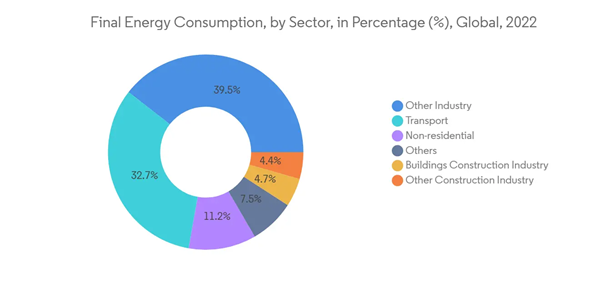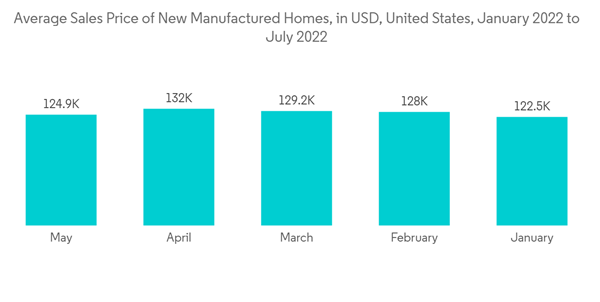Key Highlights
- The factory-building process's effectiveness makes prefabricated houses so reasonably priced. Manufactured homes are made nearly entirely off-site in a factory using standard building components.
- The controlled construction environment and assembly line processes eliminate many of the issues that arise during conventional home construction, such as weather, theft, vandalism, damage to building materials and supplies, and inexperienced workers. Compared to the system of outsourced labor used by the site-built house construction industry, factory workers are educated and controlled more successfully and efficiently.
- Similar to other assembly line processes, prefabricated houses profit from economies of scale brought about by buying huge numbers of components, goods, and appliances. When purchasing a manufactured home, the customer benefits directly from the manufacturer's ability to negotiate significant discounts on various building materials.
United States Manufactured Homes Market Trends
States in the US Spending the Most on Manufactured Housing
The housing affordability issue in the United States is more pronounced than ever after two years of skyrocketing real estate prices, mortgage rates, and rents. Households in the United States have been looking for solutions to the strain caused by rising housing expenses. One option is to build more prefabricated houses. Housing units constructed at a factory and then delivered to their final location fall under manufactured housing. These units are sometimes far less expensive than site-built dwellings since they typically feature straightforward designs and cost-effective materials. According to 2021 research from the Manufactured Housing Institute, a manufactured home typically costs USD 57 per square foot, significantly cheaper than the USD 119 cost of a site-built home.This less expensive choice holds a lot of appeal for families with lower and moderate incomes. Presently, 22 million Americans reside in prefabricated houses, and each year, around 1 in 10 new homes built in the country are manufactured homes. The quality of manufactured houses has improved with better materials, higher energy efficiency, and superior designs.
Prices have Increased due to the Increased Demand for Manufactured Homes
The rising demand for manufactured houses and housing, in general, has increased prices recently, although manufactured homes are inexpensive. A prefabricated house's average sale price has increased by 79.4% since 2014, roughly matching the 77.5% growth in home values for all properties in the Zillow Home Value Index during the same period. In the past two years alone, prices for prefabricated houses have increased sharply due to the hot real estate market and manufacturing supply chain issues.The popularity of prefabricated houses varies across the United States, but the South stands out for having a larger proportion of them. Fast-growing, densely populated southern states like Texas, Florida, and North Carolina take the top spot for annual exports of prefabricated homes. However, lower-income states like Mississippi, West Virginia, and Kentucky, whose citizens may be more tempted to prefabricated houses as a cheap choice, are among the top places for new single-family homes.
United States Manufactured Homes Industry Overview
The environment of the manufactured housing sector is fragmented, with a mix of international, regional, and local businesses. Local players in the area are well recognized for their quick delivery of manufactured homes. Skyline Champion Corporation, Morton Buildings Inc., The High Construction Company, American Buildings Company, Z Modular, Affinity Building Systems, Varco Pruden, and Westchester Modular Homes Inc. are among the nation's top competitors.Additional Benefits:
- The market estimate (ME) sheet in Excel format
- 3 months of analyst support
This product will be delivered within 2 business days.
Table of Contents
Companies Mentioned (Partial List)
A selection of companies mentioned in this report includes, but is not limited to:
- Skyline Champion Corporation
- Morton Buildings Inc.
- The High Construction Company
- Z Modular
- Affinity Building Systems
- Varco Pruden
- Westchester Modular Homes Inc.
- SG Modular
- Plant Prefab
- Homette Corporation *










